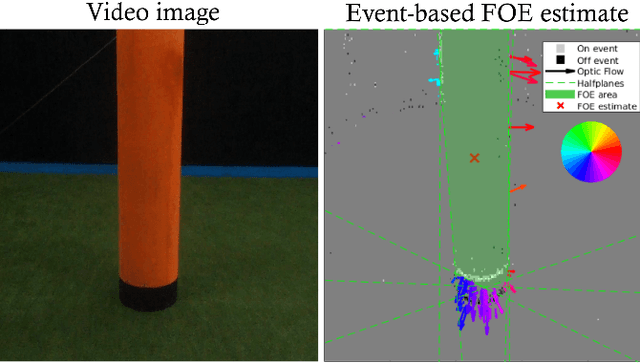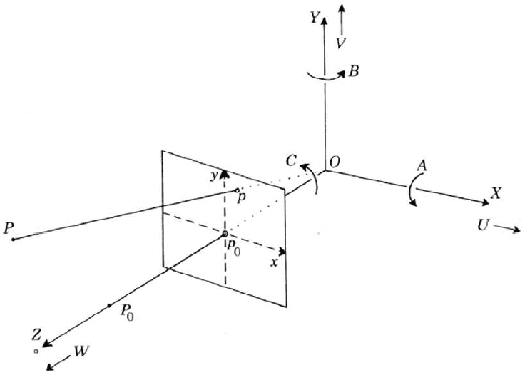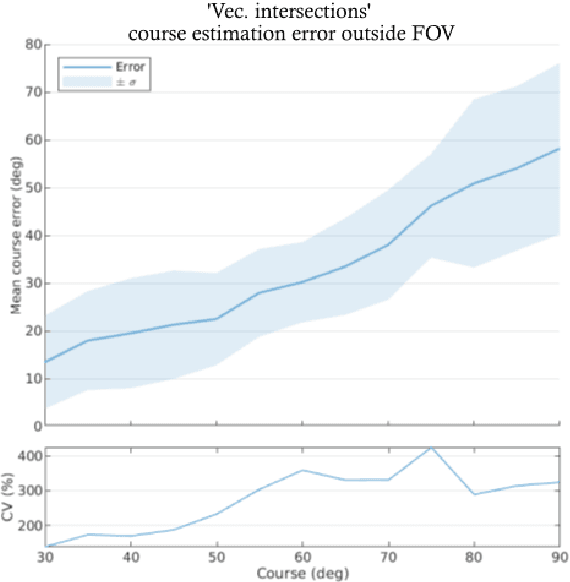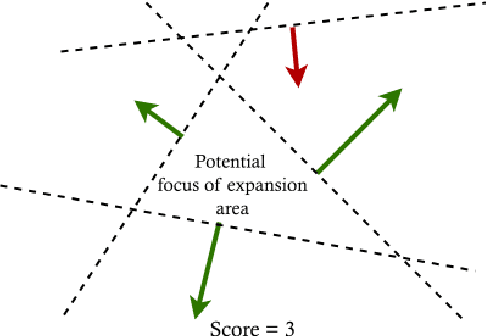FAITH: Fast iterative half-plane focus of expansion estimation using event-based optic flow
Paper and Code
Feb 25, 2021



Course estimation is a key component for the development of autonomous navigation systems for robots. While state-of-the-art methods widely use visual-based algorithms, it is worth noting that they all fail to deal with the complexity of the real world by being computationally greedy and sometimes too slow. They often require obstacles to be highly textured to improve the overall performance, particularly when the obstacle is located within the focus of expansion (FOE) where the optic flow (OF) is almost null. This study proposes the FAst ITerative Half-plane (FAITH) method to determine the course of a micro air vehicle (MAV). This is achieved by means of an event-based camera, along with a fast RANSAC-based algorithm that uses event-based OF to determine the FOE. The performance is validated by means of a benchmark on a simulated environment and then tested on a dataset collected for indoor obstacle avoidance. Our results show that the computational efficiency of our solution outperforms state-of-the-art methods while keeping a high level of accuracy. This has been further demonstrated onboard an MAV equipped with an event-based camera, showing that our event-based FOE estimation can be achieved online onboard tiny drones, thus opening the path towards fully neuromorphic solutions for autonomous obstacle avoidance and navigation onboard MAVs.
 Add to Chrome
Add to Chrome Add to Firefox
Add to Firefox Add to Edge
Add to Edge